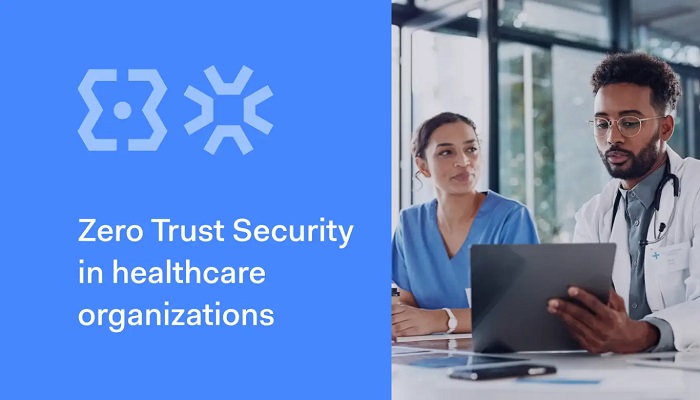Today, healthcare organizations are at greater risk of cyber attacks as these organizations store the most sought-after confidential data. Even amateur cybercriminals try to execute attacks on these organizations to steal health-related confidential data and generate tons of money by selling it on the black market. When healthcare organizations rely on legacy technologies and out-of-date security practices, cyber criminals can accomplish their goals easily. That’s mainly because cyber criminals are using the most advanced methods and tactics of all time and unfortunately legacy technologies aren’t able to safeguard corporate assets against these sophisticated and advanced methods. For this reason, implementing holistic security solutions like Zero Trust Network Access (ZTNA) is essential, especially for healthcare organizations.
Additionally, transitioning to the Zero Trust framework will help healthcare organizations become compliant with compliance regulations, laws, and standards like Health Insurance Portability and Accountability Act (HIPAA). Nowadays, being compliant with regulations is really vital because regulators apply severe fines for each violation and data breach. For example, HIPAA regulators can apply fines that go up to 1,5 million dollars yearly in accordance with the severity of the violation or data breach. To avoid all of these outcomes, the Zero Trust framework is necessary. Let’s explain what is Zero Trust Network Access (ZTNA) solution further.
What Is Zero Trust Network Access (ZTNA)?
Zero Trust Network Access (ZTNA) is a comprehensive security framework that is built upon the idea of “never trust, always verify”. This framework thinks that every user, device, or application is compromised and hostile, and for this reason, continuous verification is required for all entities that want to access private corporate networks and resources. Verification of users is conducted via multi-factor authentication (MFA), biometrics, and single sign-on (SSO) tools.
These authentication tools strengthen security as they demand users to authenticate their identities in more than 2 ways. This eliminates the risks associated with compromised user IDs and passwords. Because even if cyber criminals manage to steal employees’ login credentials, they still need to pass through the remaining authentication factors to gain access to corporate networks and resources. Passing through authentication factors is really difficult because authentication mechanisms can require security keys, tokens, biometrics, etc.
On top of these, Zero Trust enforces the least privilege principle, meaning that everyone inside the organization has limited access to corporate networks and resources. Simply, everyone is allowed to access resources that are required for their duties and tasks, nobody can access resources that are over their job roles. If somebody tries to access resources or data that is beyond their access privileges, the Zero Trust framework will trigger an alert and remove this user’s access to all corporate resources.
Zero Trust solution has the greatest Identity Access Management capabilities and features that will help healthcare organizations become compliant with regulations and standards. Because healthcare organizations can restrict access to network areas that have health-related confidential information, any attempt to access these areas will trigger an alert and enable rapid response to all threats.
Benefits of Zero Trust Network Access (ZTNA)
1-Network Visibility
Zero Trust enables the best network visibility that most security tools can’t deliver. It allows healthcare organizations to map every user, device, and application in their networks. Additionally, it has activity and behavioral monitoring features that allow healthcare organizations to catch anomalies or suspicious activities and behaviors quickly. This way, IT admins can eliminate threats before they damage the organization and corporate assets. On top of these, IT admins can get real-time or historical data of user activities and see who accesses which resources when, and from where.
2-Robust Endpoint Security
Zero Trust endpoint security is what healthcare organizations need these days. Zero Trust enables robust endpoint security by securing identities and devices. Identities are secured by using MFA, biometrics, and single sign-on (SSO) tools. Additionally, the Zero Trust solution has a jailbroken device detection feature that allows this framework to detect weak and unsafe devices. When these devices are detected, Zero Trust alerts IT admins so that they can restrict access to these vulnerable devices until they are secured.
3-Reduced Surface Areas of Potential Attacks
Zero Trust solution uses a network segmentation strategy to reduce the surface areas of potential attacks. Network segmentation is a procedure of separating a network into smaller pieces, and creating various checkpoints for users. One of the main purposes of applying this process is to stop cyber attacks before they spread to the other subsections of a corporate network. Additionally, Zero Trust prohibits users’ lateral movement between the subsections of the network. If somebody tries to move laterally or roam within the corporate network, this triggers an alert, and IT admins restrict this user’s access to corporate resources.
Putting lateral movement policies is quite useful for mitigating internal security risks and stopping cyber attacks in the subsegments where they occur. On top of these, as a part of network segmentation strategy healthcare organizations can segment their vulnerable machinery so that in the event of cyber attacks, these devices will remain secure and safe. Lastly, Zero Trust enables robust data protection against cyber attacks and mitigates security risks.
Last Remarks
In today’s world, healthcare organizations are facing the highest security risks because they store health-related confidential data and this data type is the most valuable of all. Unfortunately, with legacy security infrastructure, healthcare organizations can’t establish robust security for health-related confidential data that they store. That’s why implementing Zero Trust Network Access (ZTNA) solutions is really critical for healthcare organizations.


















